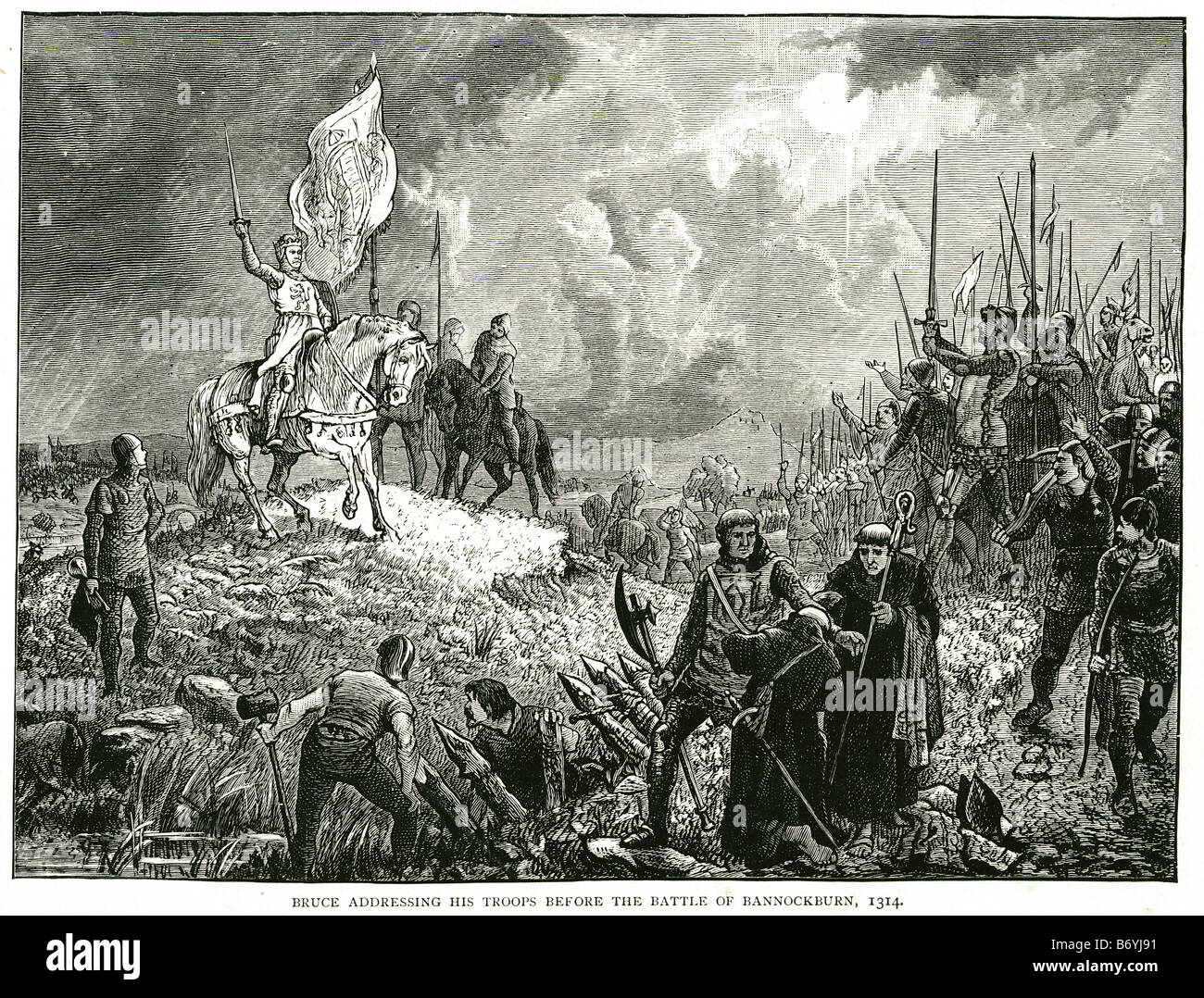bruce addressing his troops before the battle of bannockburn 1314 Blàr Allt a' Bhonnaich Scottish victory

Image details
Contributor:
19th era / Alamy Stock PhotoImage ID:
B6YJ91File size:
50.3 MB (6.4 MB Compressed download)Releases:
Model - no | Property - noDo I need a release?Dimensions:
4807 x 3656 px | 40.7 x 31 cm | 16 x 12.2 inches | 300dpiMore information:
Battle of Bannockburn (Blàr Allt a' Bhonnaich in Gaelic) (24 June 1314) was a significant Scottish victory in the Wars of Scottish Independence. It was the decisive battle in the First War of Scottish Independence. It was on the old road that the preliminary actions of the Battle of Bannockburn took place on Sunday, 23 June. For the English, things started to go wrong before the first blow had been struck. Sir Philip Mowbray, the commander of Stirling Castle, who had observed Bruce's preparations on the road, appeared in Edward's camp early in the morning, and warned of the dangers of approaching the Scots directly through the New Park. Mowbray also pointed out that there was no need to force a battle, as Edward was now close enough to the castle to constitute a technical relief in terms of the agreement with Edward Bruce. But even if the king was disposed to act on Mowbray's advice, it was already too late; for he was showing signs of losing control of his formidable but unwieldy host. The vanguard under the earls of Gloucester and Hereford, appointed to joint command by Edward after a quarrel about who would take the lead - a compromise that satisfied no one - were already closing in on the Scots from the south, advancing in the same reckless manner that had almost brought disaster at Falkirk. Following the line of the Roman road, they crossed the ford over the Bannock Burn towards King Robert's division at the opening of the New Park. There now occurred one of the most memorable episodes in Scottish history. Sir Henry de Bohun, nephew of the Earl of Hereford, was riding ahead of his companions when he caught sight of the Scottish king. De Bohun lowered his lance and began a charge that carried him to lasting fame. King Robert was mounted on a small palfrey and armed only with a battle-axe. He had no armour on. As de Bohun's great war-horse thundered towards him, he stood his ground, watched with mounting anxiety by his own army. With the Englishman on